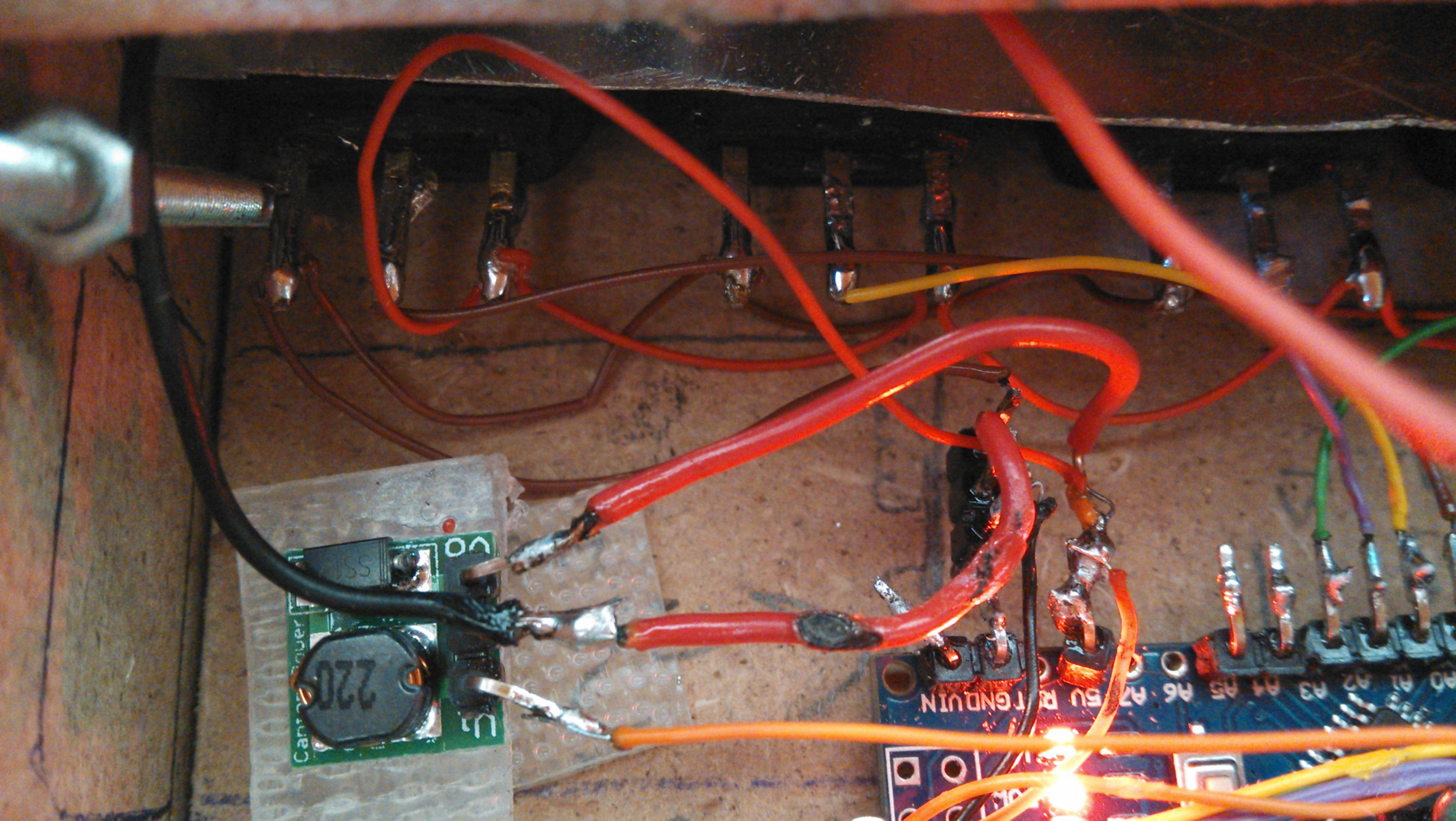So my 9V battery started to die on me yesterday, which prompted me to go to plan B.
I know a 9V block is one of the least efficient ways of powering an Adruino, but it IS simple and it DOES work. For a while that is. I estimate I got just over two hours worth of run-time out of the one I had.
But I just wasn't interested in buying another mucho expensive 9V block while I had better options lying on the shelf.
The problem is that the Arduino has an on-board regulator that is very wasteful. It was designed to take a higher voltage than 5V and regulate that down to 5V for the Arduino and some accessories.
Thing is, it basically does this by burning off the excess energy. That's kind of like stoking up the fireplace and opening some windows and doors to keep from getting too hot! Arduinos were designed for rapid prototyping, not really for putting them to permanent use, and at the current price of clones I'm not complaining!
Nowadays you can get some ridiculously cheap and easy to use modules that take voltages between 1 and 5V and regulate that up to 5V which we can use for our Arduino. These work by very quickly causing voltage spikes and storing them up in spools and capacitors while constantly regulating the process so the output stays at 5V. It sounds complicated but there's so much call for these today that they have become dirt cheap.
To use these I rigged up two AA batteries in a battery holder and connected the leads to the DC DC Boost Converter. The outputs go to the Arduinos ground and 5V connections.
Here's the big difference, by using the 5V directly instead of the VIn we can bypass the wasteful regulator on the Arduino and save almost half the power. In fact, where CarbOnBal was drawing almost 300mA from the 9V battery (good for a couple of hours total) its down to 150 from the 3V battery its now using (2x1.5V)! These batteries should last me 10 hours or so and rechargeables can be used with no ill-effects.
I've added a schematic to the files section in case you are interested in this option.
Parts:
- 1 pce. 2x AA battery holder (3x works even better, but wouldn't fit in the case I made.
- 2 pcs. AA batteries
- 1 pce. DC-DC Boost regulator 1-5 to 5V output rated for 250mA minimum

In the Bottom left you can see the tiny module in place. Its stuck in with automotive grade Velcro. The black lead is the battery negative and the red (I ran out of black) that shares its pin is connected to the Arduino GND. Notice the unused VIn pin! The Module's Vo(ut) pin goes directly to the Arduino's 5V pin to power it.
Note that this 'solution' turned out to be too simple. The boost converter I used was too primitive and put out a lot of switching noise and mains "hum". See the next update for a fix.
 dennis
dennis
Discussions
Become a Hackaday.io Member
Create an account to leave a comment. Already have an account? Log In.